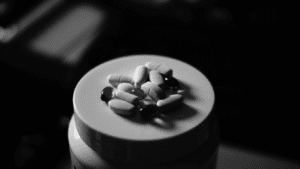Introduction
Melanin is the natural pigment responsible for the color of your skin, hair, and eyes. It acts as a protective barrier against the harmful effects of ultraviolet (UV) rays from the sun, but sometimes, individuals seek ways to reduce melanin production to achieve a lighter complexion or address hyperpigmentation issues. While melanin is essential for protecting the skin, the desire to reduce it has led to a surge in interest in natural remedies and treatments that can help lighten skin tone. This comprehensive guide will explore various methods to reduce melanin, backed by scientific research and expert advice.
Understanding Melanin
What Is Melanin?
Melanin is a complex polymer derived from the amino acid tyrosine. It is produced by melanocytes, which are specialized cells located in the basal layer of the epidermis. There are two primary types of melanin:
- Eumelanin: Responsible for brown and black pigmentation.
- Pheomelanin: Responsible for red and yellow pigmentation.
The amount and type of melanin in your skin are determined by genetic factors, but environmental influences, such as sun exposure, can increase melanin production.
The Role of Melanin in Skin Health
Melanin plays a crucial role in protecting the skin from UV radiation, which can cause skin cancer, premature aging, and other skin disorders. It absorbs UV radiation and dissipates it as heat, thereby reducing the risk of DNA damage.
Factors That Influence Melanin Production
1. Genetic Predisposition
Your genes largely determine the baseline level of melanin in your skin. People with darker skin tones have more eumelanin, which provides greater protection against UV rays but also results in a darker complexion.
2. Sun Exposure
UV radiation stimulates the production of melanin as a defense mechanism. This is why prolonged sun exposure leads to tanning or darkening of the skin.
3. Hormonal Changes
Hormonal fluctuations, such as those occurring during pregnancy, can lead to increased melanin production, resulting in conditions like melasma (also known as “pregnancy mask”).
4. Medications and Health Conditions
Certain medications, such as oral contraceptives and chemotherapy drugs, can increase melanin production. Health conditions like Addison’s disease can also cause hyperpigmentation.
Natural Methods to Reduce Melanin
1. Dietary Changes
Diet plays a significant role in skin health and melanin production. Here are some foods that may help reduce melanin levels naturally:
a. Vitamin C-Rich Foods:
Vitamin C is a potent antioxidant that inhibits melanin production. Citrus fruits, strawberries, and bell peppers are excellent sources of vitamin C.
b. Vitamin E-Rich Foods:
Vitamin E promotes skin repair and protects against UV damage. Foods like almonds, sunflower seeds, and spinach are high in vitamin E.
c. Carotenoids:
Found in carrots, sweet potatoes, and spinach, carotenoids can help reduce melanin production by limiting the skin’s response to UV exposure.
d. Glutathione:
A powerful antioxidant found in avocados, spinach, and tomatoes, glutathione is known to reduce melanin levels and lighten skin.
2. Topical Treatments
Several natural ingredients are known for their melanin-reducing properties. These can be used in the form of creams, serums, or homemade masks:
a. Aloe Vera:
Aloe vera contains aloesin, which inhibits tyrosinase, an enzyme involved in melanin production. Applying aloe vera gel regularly can help reduce hyperpigmentation.
b. Licorice Extract:
Glabridin, a compound in licorice, has been shown to inhibit melanin production. It can be used to lighten dark spots and even out skin tone.
c. Kojic Acid:
Derived from fungi, kojic acid inhibits melanin production and is commonly used in skin-lightening products.
d. Lemon Juice:
Rich in vitamin C, lemon juice can reduce melanin but should be used with caution due to its acidic nature, which can irritate the skin.
3. Home Remedies
Home remedies can be an accessible and natural way to manage melanin levels:
a. Turmeric Mask:
Turmeric contains curcumin, a compound with antioxidant and anti-inflammatory properties that can reduce melanin production. Mix turmeric with yogurt or honey and apply it as a mask.
b. Papaya Mask:
Papaya contains papain, an enzyme that exfoliates the skin and reduces melanin. Applying mashed papaya to the skin can help lighten dark spots.
c. Milk and Honey:
The lactic acid in milk and the natural enzymes in honey can help lighten skin by reducing melanin. A mixture of these can be used as a gentle face mask.
4. Lifestyle Changes
Adopting certain lifestyle changes can also help in reducing melanin levels:
a. Regular Exfoliation:
Exfoliating the skin removes dead skin cells and can help in reducing melanin buildup. Opt for natural exfoliants like sugar scrubs or chemical exfoliants like alpha hydroxy acids (AHAs).
b. Sun Protection:
Since UV exposure increases melanin production, wearing sunscreen with a high SPF, using protective clothing, and avoiding peak sun hours are essential for preventing further darkening.
c. Adequate Hydration:
Keeping the skin hydrated can help in maintaining a healthy skin barrier and may assist in reducing melanin over time.
Medical Treatments for Melanin Reduction
If natural methods don’t yield the desired results, medical treatments may be considered:
1. Chemical Peels
Chemical peels involve the application of acids like glycolic acid or salicylic acid to exfoliate the skin and reduce melanin. They can be effective for treating hyperpigmentation but should be performed by a dermatologist.
2. Laser Therapy
Laser treatments target and break down melanin in the skin. Different types of lasers are available, and the choice depends on the depth of pigmentation. This method is highly effective but can be expensive and requires multiple sessions.
3. Microdermabrasion
Microdermabrasion is a non-invasive procedure that uses a special device to exfoliate the skin, removing the outer layer where excess melanin may be present. It can help in reducing pigmentation and promoting a more even skin tone.
4. Prescription Creams
Dermatologists may prescribe creams containing ingredients like hydroquinone, tretinoin, or corticosteroids. These creams reduce melanin production but should be used under medical supervision due to potential side effects.
Risks and Considerations
While reducing melanin can be achieved through various methods, it is important to be aware of the risks and considerations:
a. Skin Sensitivity:
Reducing melanin makes the skin more susceptible to UV damage. Always use sunscreen and limit sun exposure.
b. Allergic Reactions:
Some natural remedies and topical treatments may cause allergic reactions. Conduct a patch test before using any new product.
c. Overuse of Treatments:
Overuse of skin-lightening treatments, especially those containing harsh chemicals, can lead to skin damage, thinning, and other complications.
d. Consult a Professional:
Before starting any treatment, it’s advisable to consult a dermatologist to determine the best approach for your skin type and condition.
Frequently Asked Questions (FAQs)
1. Can melanin be permanently reduced?
While certain treatments can significantly reduce melanin levels, melanin production is a natural process that the body regulates. Some treatments offer long-term results, but they are not permanent.
2. Is it safe to use lemon juice on the skin to reduce melanin?
Lemon juice is acidic and can cause skin irritation, especially when exposed to sunlight. It should be used cautiously and always followed by sunscreen application.
3. How long does it take to see results from natural melanin-reducing treatments?
Results vary depending on the treatment and individual skin type. Natural remedies may take several weeks to show noticeable effects.
4. Are there any side effects of reducing melanin?
Reducing melanin can increase the risk of sunburn and skin cancer due to decreased natural protection from UV rays. Always use sunscreen and protective clothing.
5. Can diet alone reduce melanin?
While diet can influence melanin production, it is unlikely to cause significant changes in skin tone on its own. It is best combined with other treatments for optimal results.
Conclusion
Reducing melanin is a complex process that requires a combination of dietary changes, topical treatments, lifestyle adjustments, and possibly medical interventions. While achieving a lighter complexion is possible, it is crucial to approach the process with caution and awareness of the potential risks involved. Always prioritize skin health and consult with a dermatologist before starting any melanin-reduction regimen.




